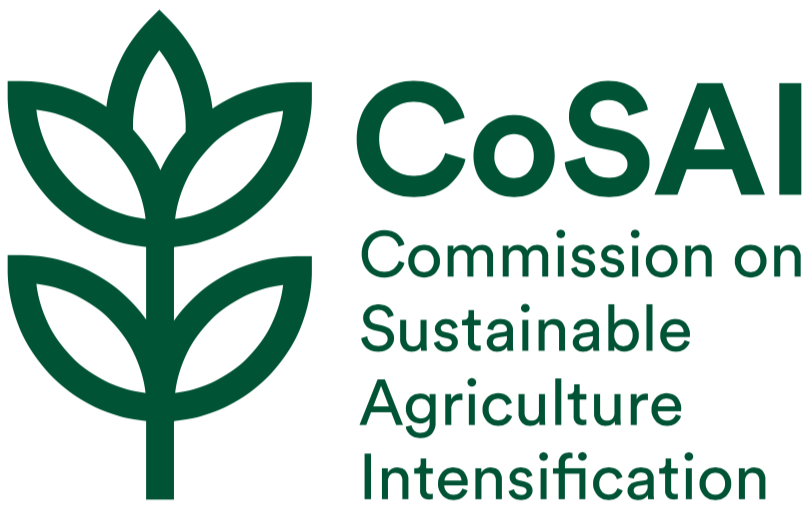How can economic incentives designed for environmental conservation support a transition to sustainable and equitable agriculture?
View results in:
https://www.iwmi.cgiar.org/archive/cosai/sites/default/files/CoSAI_PANS_Study/index.pdf

Licensing of resource:
Rights subject to owner's permission
Type:
report
Author(s):
Commission on Sustainable Agriculture Intensification (CoSAI)
Publisher(s):

Description:
Agriculture is crucial for the livelihood of millions of people worldwide and is one of the main drivers of deforestation, biodiversity loss and resource degradation. The contribution of agriculture to these environmental problems has been exacerbated by subsidies, which constitute the dominant public policy to support farmers. At the same time, other economic instruments introducing more sustainable land-use practices and incentivizing better environmental and social outcomes are already being applied worldwide. In this report, we selected a set of these incentive-based instruments for conservation and reviewed synthesis and meta-analysis studies that offered robust evaluations and comparisons of existing research. Please note that we use conservation as a shorthand for the protection and restoration of nature, and the mitigation of the effects of climate change on the environment. Based on thisreview, we identify their impacts on environmental, economic, and equity outcomes and discuss the success factors and challenges in their application and design.
Overall, we find some positive effects on deforestation reduction and the protection of surface water sources, with modest impacts on mitigation of climate change via emission reductions of greenhouse gases. Moreover, economic impacts on livelihoods and distributional effects are mixed and understudied in the literature, especially for the Global South. The evidence in the literature suggests that a crucial factor in the performance of economic instruments for conservation is a robust monitoring and sanction system based on conditional compensations. Their long-term success depends on the capacity to generate verifiable environmental benefits and the distributional impacts between winners and losers in conservation efforts.
Despite the potential of economic instruments for conservation to generate impact, significant tradeoffs remain between scalability versus efficiency, equity versus productivity and monitoring versus participation. Notably, the application of these instruments in sustainable agriculture requires tailoring their design to the local conditions of farmers, making forest conservation compatible with rural livelihoods, and balancing punishments and rewards.
Resultsfrom thisreview call forinnovationsto make these instruments usefulto support the transition to sustainable agriculture. Opportunities for innovation include (i) lower access cost to smallholders, (ii) allowing mixed uses, with an emphasis on restoration, (iii) enhancing community participation in monitoring and (iv) work on spatial targeting of the most critical ecosystems with a landscape or jurisdictional approach.
Publication year:
2021
Keywords:
Economic incentives
sustainable agriculture
transition paths
Related Resources
Task Force on Principles and Metrics for Innovation in Sustainable Agri-food Systems: Final Report
A huge increase in investment for innovation in sustainable agri-food systems (SAS) will be critical for meeting the objectives of the UN Sustainable Development Goals and the Paris Climate Agreement.
Currently only a small fraction of investment addresses environmental...
Publication year:
2022Author(s):
Commission on Sustainable Agriculture Intensification (CoSAI)
- Link to web resource
Perspectivas de la agricultura y del desarrollo rural en las Américas : una mirada hacia América Latina y el Caribe 2015-2016: resumen ejecutivo
Esta edición del documento “Perspectivas de la agricultura y del desarrollo rural en las Américas (2015-2016)” se divide, de conformidad con la estructura de los cinco informes anteriores, en los siguientes cuatro capítulos:
Capítulo I: Contexto macroeconómico: Se analizan la...
Publication year:
2015- Link to web resource
Institucionalidad responsable por la agricultura familiar y las políticas públicas diferenciadas en el Mercosur. Marco de actuación de la REAF
Este documento trata del nacimiento y actuación de la REAF (Reunión Especializada de Agricultura Familiar) como órgano asesor de los órganos ejecutivos del Mercosur. El documento trata también del reconocimiento de la agricultura familiar como una categoría que requiere de...
Publication year:
2015- Link to web resource
The outlook for agriculture and rural development in the Americas A perspective on Latin America and the Caribbean 2015 - 2016: Executive summary
This edition of “The Outlook for Agriculture and Rural Development in the Americas,” covering 2015-2016, is divided into the following four chapters:
Chapter I: Macroeconomic Context: The author analyzes the evolution and outlook for financial and macroeconomic markets, which determine...
Publication year:
2015- Link to web resource
Dialogue régional sur l'agriculture familiale dans la région Proche-Orient et Afrique du Nord
Le principal message qui est ressorti de la consultation est que l'agriculture familiale apportait une contribution cruciale aux secteurs agricole et halieutique et à la sécurité alimentaire de la région et, qu'à ce titre, les mesures de soutien de cette...
Publication year:
2014- Link to web resource
